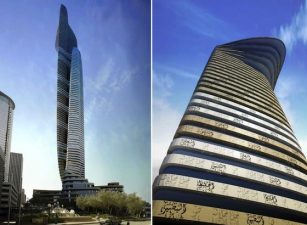 A fusion of traditional Islamic architecture and modern sustainable design, Gaza’s new green schools will cost the same to build as their less-sustainable counterparts.
A fusion of traditional Islamic architecture and modern sustainable design, Gaza’s new green schools will cost the same to build as their less-sustainable counterparts.
We recently reported that Gaza is slated to receive not one but 20 zero-energy eco-schools, and now we have a better sense of what they will look like thanks to a handful of architectural renderings sent to us by the United Nations Relief and Works Agency (UNRWA).
UNRWA has teamed up with architect Mario Cucinella to build solar and geothermal-powered schools using local materials, which combined will slash their overall environmental impact. Not only will this project blaze a new path in sustainable development, but education in the Gaza Strip will also become less vulnerable to the politics du jour. More images of this groundbreaking project after the break.
 Notice the mashrabiya screen commonly used in traditional Islamic architecture to filter out harsh sunlight and promote natural ventilation. This passive design technique is typically used on a much smaller scale, but these images depict an entire complex sheltered from the sun in this way.
Notice the mashrabiya screen commonly used in traditional Islamic architecture to filter out harsh sunlight and promote natural ventilation. This passive design technique is typically used on a much smaller scale, but these images depict an entire complex sheltered from the sun in this way.
 This render demonstrates how the leafy green courtyard will be central to the entire school, promoting both community and an appreciation for the outdoors. This area will be irrigated using filtered grey water.
This render demonstrates how the leafy green courtyard will be central to the entire school, promoting both community and an appreciation for the outdoors. This area will be irrigated using filtered grey water.
 Construction is a key contributor to global emissions, so Mario Cucinella has proposed a design that uses locally-available materials with a much smaller carbon footprint. These materials also have excellent thermal massing that reduces the need for mechanical heating or cooling.
Construction is a key contributor to global emissions, so Mario Cucinella has proposed a design that uses locally-available materials with a much smaller carbon footprint. These materials also have excellent thermal massing that reduces the need for mechanical heating or cooling.
 Each school will accommodate up to 800 students and will rely complete on renewables for its energy supply. Solar panels will be strategically placed to harvest energy from the sun, while cutting edge geothermal technology will provide additional heating and cooling. The schools will each cost $2 million to build – the same as other UNWRA schools in the region.
Each school will accommodate up to 800 students and will rely complete on renewables for its energy supply. Solar panels will be strategically placed to harvest energy from the sun, while cutting edge geothermal technology will provide additional heating and cooling. The schools will each cost $2 million to build – the same as other UNWRA schools in the region.
This extraordinary project is being funded in part by the Kuwait Fund. Eventually, UNRWA hopes to build similar schools in the West Bank, Jordan, Lebanon, and Syria.



